Wild mouse maze experiments
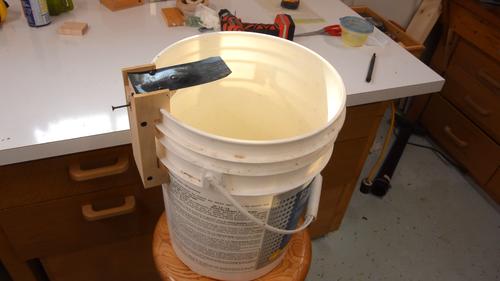 I have seen many editorial cartoons involving rat mazes, which
gave me the idea of making some sort of mouse maze, and using
a trap to inject the mice unattended.
I have seen many editorial cartoons involving rat mazes, which
gave me the idea of making some sort of mouse maze, and using
a trap to inject the mice unattended.
I figured my tipping ramp trap would be the perfect way of getting the mice in, and my imgcomp running on a Raspberry pi board with camera was a good way to capture the action.
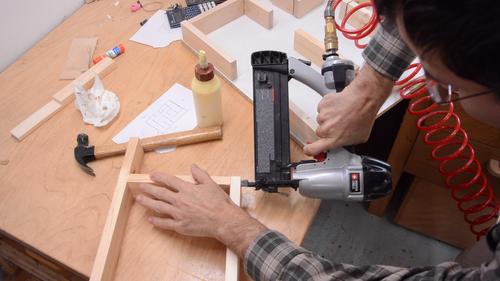 I started by building a mouse maze using some particle board with a white coating
as a backer so it would show up better on camera. The wall pieces are butt joined and
nailed and glued together and attached with a few screws from the bottom.
I started by building a mouse maze using some particle board with a white coating
as a backer so it would show up better on camera. The wall pieces are butt joined and
nailed and glued together and attached with a few screws from the bottom.
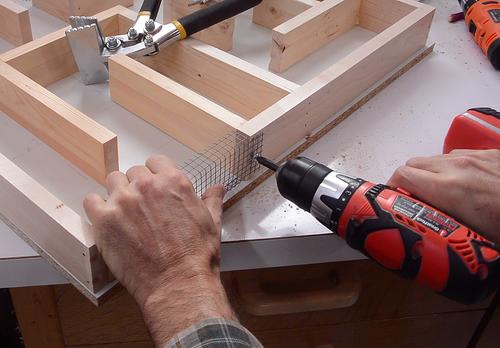 I added two extra "false exits" with a screen on them, just to make
it more interesting.
I added two extra "false exits" with a screen on them, just to make
it more interesting.
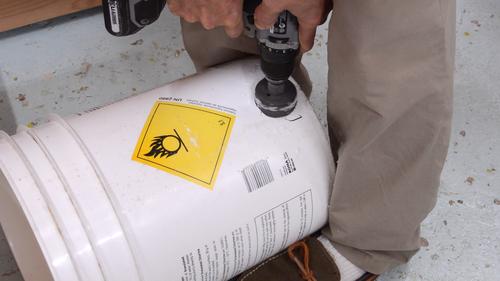 I had to sacrificed a five gallon bucket for the cause, drilling a big hole in
the bottom so the mouse, caught in the bucket, could exit into the maze.
I had to sacrificed a five gallon bucket for the cause, drilling a big hole in
the bottom so the mouse, caught in the bucket, could exit into the maze.
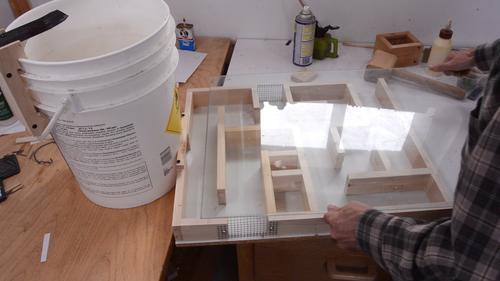
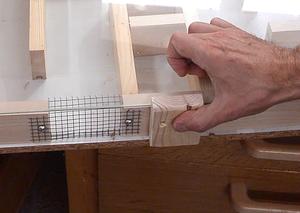 I added a glass cover for the maze to ensure the mouse doesn't just
jump over the walls. I was going to cut the glass to size, but
after scoring it, it just wouldn't break. I suspect it's
tempered glass, and any break would result in the whole piece breaking
into a thousand pieces. So I just left it the size it was.
I added a glass cover for the maze to ensure the mouse doesn't just
jump over the walls. I was going to cut the glass to size, but
after scoring it, it just wouldn't break. I suspect it's
tempered glass, and any break would result in the whole piece breaking
into a thousand pieces. So I just left it the size it was.
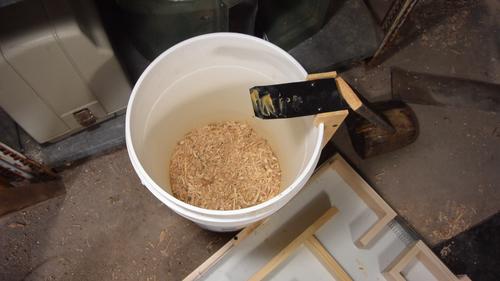 I put a layer of wood shavings in the bottom of the bucket. It's harder for
the mouse to jump high off a soft surface, and I figured this would prevent
the mouse from jumping out of the bucket.
I put a layer of wood shavings in the bottom of the bucket. It's harder for
the mouse to jump high off a soft surface, and I figured this would prevent
the mouse from jumping out of the bucket.
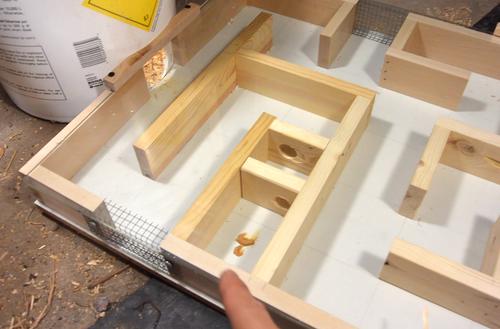 I also put a few dabs of peanut butter into the maze, especially
inside this small space which is only accessible through some
small holes in the walls.
I also put a few dabs of peanut butter into the maze, especially
inside this small space which is only accessible through some
small holes in the walls.
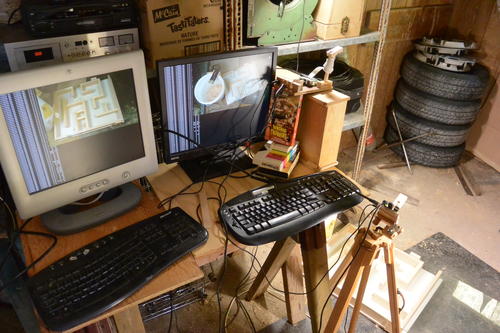 Then setting it up in a shed that gets lots of mice. I set up
two Raspberry Pi computers with camera modules on them, one for an overview,
another just focused on the maze.
Then setting it up in a shed that gets lots of mice. I set up
two Raspberry Pi computers with camera modules on them, one for an overview,
another just focused on the maze.
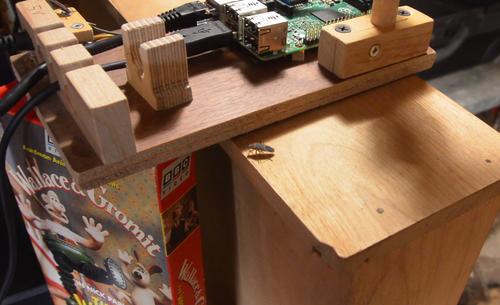
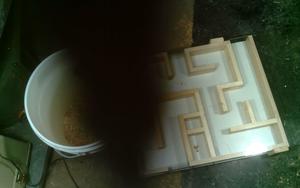 For the first week, I didn't see any mice in the maze, but I did see some very
eerie large fuzzy shadows moving across the field of view. These were from
Insects, like the beetle at left, crawling over the camera lens.
For the first week, I didn't see any mice in the maze, but I did see some very
eerie large fuzzy shadows moving across the field of view. These were from
Insects, like the beetle at left, crawling over the camera lens.
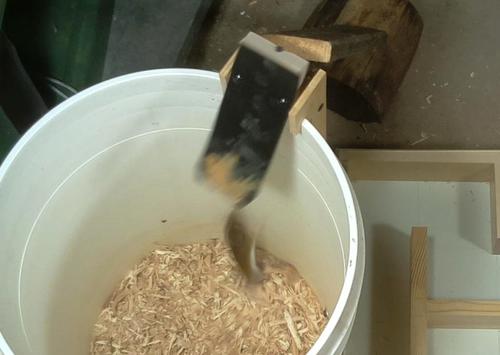 The next week I finally had the mouse go on the trap, get dumped, and take
a good long time finding its way out of the maze.
The next week I finally had the mouse go on the trap, get dumped, and take
a good long time finding its way out of the maze.
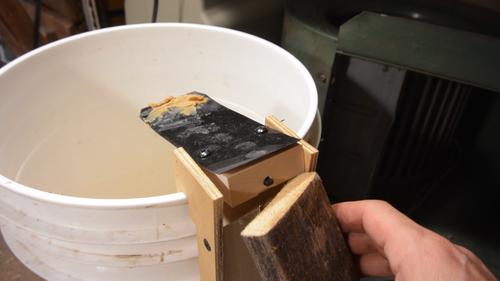
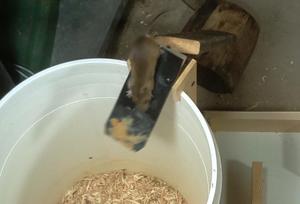 But when the mouse came back to the trap,
the ramp started to tip as soon as the mouse went on it, so
the mouse never went far enough to get dumped.
But when the mouse came back to the trap,
the ramp started to tip as soon as the mouse went on it, so
the mouse never went far enough to get dumped.
When I checked the trap, I realized the piece of wood I leaned against the trap as a ladder for the mouse to get up, had blocked the ramp from tipping all the way level again. Without it getting back to level, the magnet wouldn't engage, so the ramp tipped too easily.
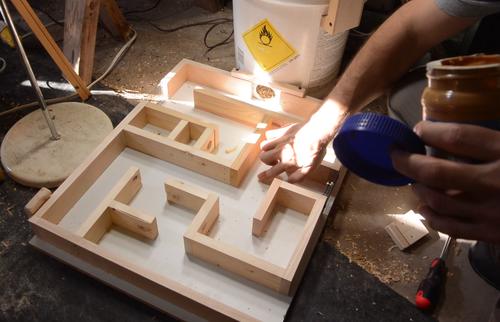 But the mouse also entered the maze by the exit a few times. I wasn't
sure if it would trust the trap again, so I put more peanut butter into
the maze itself to get it to explore the maze some more.
But the mouse also entered the maze by the exit a few times. I wasn't
sure if it would trust the trap again, so I put more peanut butter into
the maze itself to get it to explore the maze some more.
The mouse traversed the maze quite a bit to consume all the peanut butter, but it wasn't all that interesting.
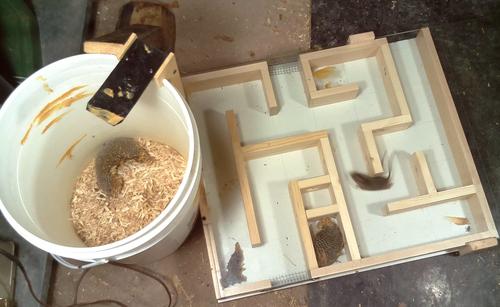 I then had the idea of putting some sunflower heads with seeds on them
in the maze. What was interesting about these is that the mouse would come
and munch on the sunflowers, then leave, come back a minute later, and repeat.
I suspect the minute of absence between munching on the sunflower heads
was the mouse going away to stash the seeds somewhere.
I then had the idea of putting some sunflower heads with seeds on them
in the maze. What was interesting about these is that the mouse would come
and munch on the sunflowers, then leave, come back a minute later, and repeat.
I suspect the minute of absence between munching on the sunflower heads
was the mouse going away to stash the seeds somewhere.
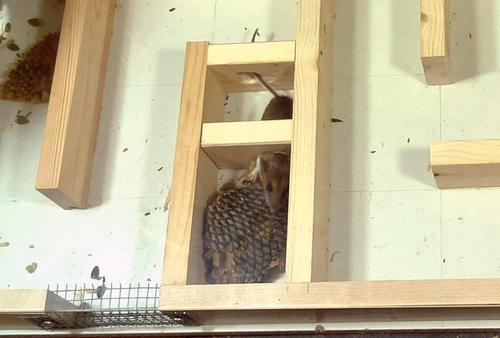 I put one piece of sunflower head in the small cubby hole, accessible only
though some drilled holes. The mouse saved that one for last, but it got
all the seeds off this one too.
I put one piece of sunflower head in the small cubby hole, accessible only
though some drilled holes. The mouse saved that one for last, but it got
all the seeds off this one too.
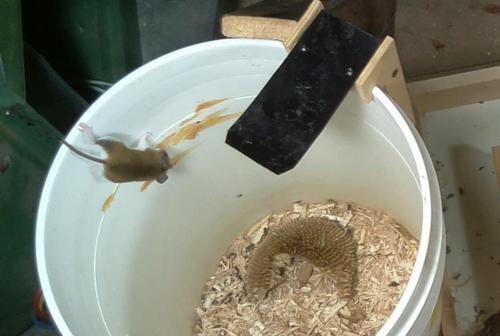 I also smeared some peanut butter below the bucket's rim to see what
the mouse would do about that.
I also smeared some peanut butter below the bucket's rim to see what
the mouse would do about that.
It was amazing to see the mouse hang off it's feet, then later hang off just one foot to eat the peanut butter. The mouse was able to recover from this position without falling into the bucket, though not every time. It's amazingly good at avoiding falling, which makes the tipping ramp trap kind of impressive in it's ability to make the mouse fall in the bucket early and often, provided that it's not jammed up and the magnet force is set appropriately for the weight of the mouse.
This video took late October and all of November 2016 to film, and then unusually
long to edit as well. It was also very much in need of a sound track.
I asked my brother in law, Anthony Savidge, and he suggested this song
"Log cabin blues", which he performed.
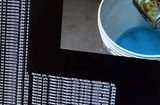 My imgcomp program (motion triggered time-lapses)
My imgcomp program (motion triggered time-lapses)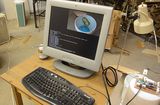 High tech mousetrap monitor fail (video only)
High tech mousetrap monitor fail (video only)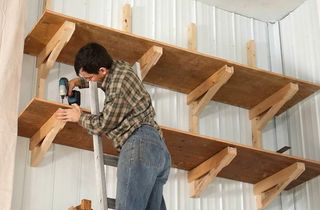 Up-high garage shelves (mouse proof)
Up-high garage shelves (mouse proof)To my Woodworking website.
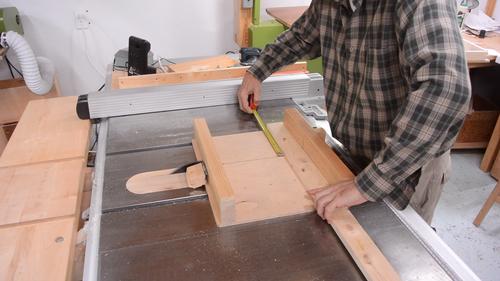
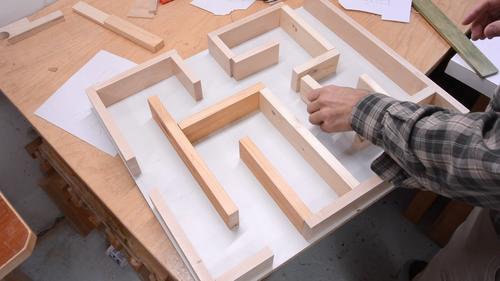
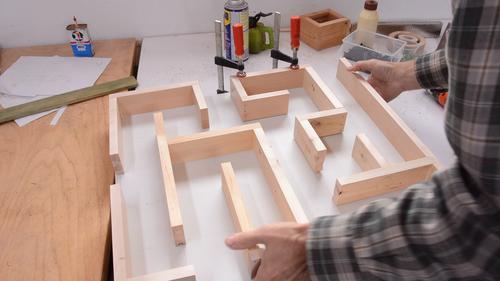
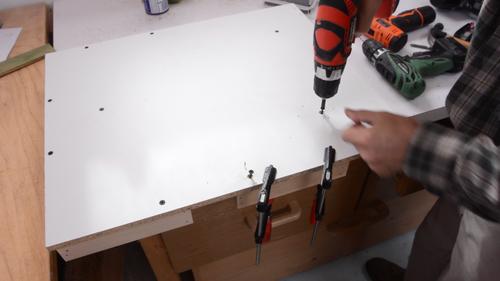
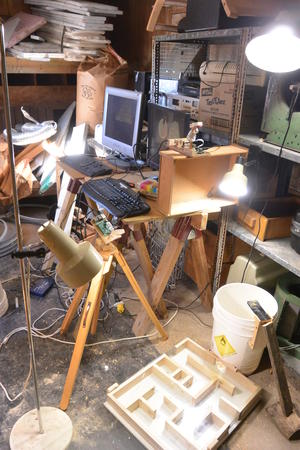
 Bigger, tighter mouse maze experiments
Bigger, tighter mouse maze experiments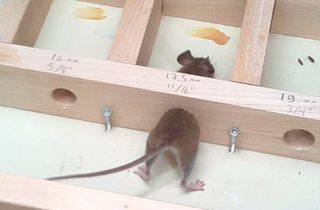 Smallest hole for a mouse experiments
Smallest hole for a mouse experiments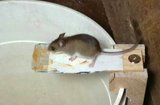 Building a better mouse trap using video surveillance
Building a better mouse trap using video surveillance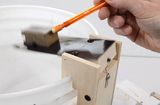 How to build a mouse trap like this one
How to build a mouse trap like this one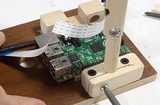 Raspberry pi computer holder
Raspberry pi computer holder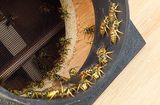 Wasp sucking
Wasp sucking